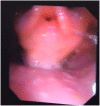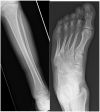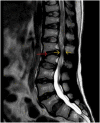Non-cardiac Manifestations in Adult Patients With Mucopolysaccharidosis
- PMID: 35321113
- PMCID: PMC8935042
- DOI: 10.3389/fcvm.2022.839391
Non-cardiac Manifestations in Adult Patients With Mucopolysaccharidosis
Abstract
Mucopolysaccharidoses (MPS) are a heterogeneous group of disorders that results in the absence or deficiency of lysosomal enzymes, leading to an inappropriate storage of glycosaminoglycans (GAGs) in various tissues of the body such as bones, cartilage, heart valves, arteries, upper airways, cornea, teeth, liver and nervous system. Clinical manifestations can become progressively exacerbated with age and affect their quality of life. Developments in advanced supportive treatment options such as enzyme replacement therapy (ERT), hematopoietic stem cell transplantation (HSCT) may have improved patients' life span. Adult MPS patients require specialist clinical surveillance long-term. In many cases, in addition to the MPS-related health problems, they may develop age-related complications. Considering the complexity of their clinical manifestations and lack of guidelines on the management of adult MPS disorders, multispecialty and multidisciplinary teams' care is essential to diagnose and treat health problems that are likely to be encountered. This review presents non-cardiac clinical manifestations, their pathophysiology, management and long-term outcomes in adult MPS patients.
Keywords: adult mucopolysaccharidosis; life span; long-term complications; long-term outcomes; mortality.
Copyright © 2022 Stepien, Bentley, Chen, Dhemech, Gee, Orton, Pringle, Rajan, Saxena, Tol and Gadepalli.
Conflict of interest statement
The authors declare that the research was conducted in the absence of any commercial or financial relationships that could be construed as a potential conflict of interest.
Figures















References
-
- Neufeld E, Muenzer J. The mucopolysaccharidoses. In: Scriver CR, Beaudet AL, Sly WS, Valle D, Childs R, Kinzler KW. editors. The Metabolic and Molecular Bases of Inherited Diseases. 8 ed. New York, NY: McGraw-Hill; (2001). p. 3421–52.
-
- Giugliani R. The Mucopolysaccharidoses. In: Mehta A, Winchester B. editor, Lysosomal Storage Disorders: A Practical Guide. London, UK: John Wiley & Sons, Ltd; (2012) p.94–100.
Publication types
LinkOut - more resources
Full Text Sources

